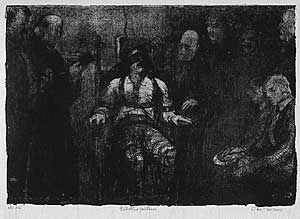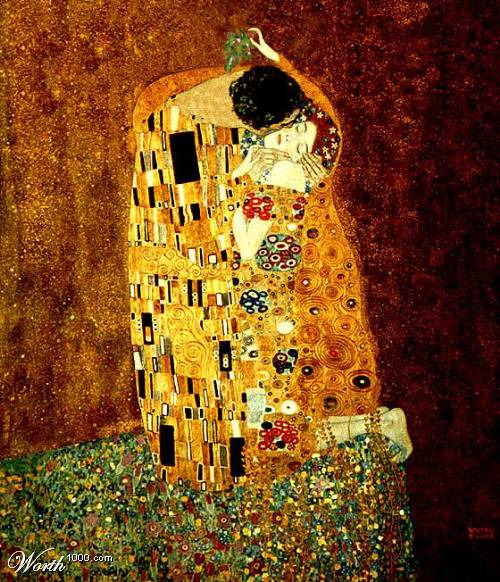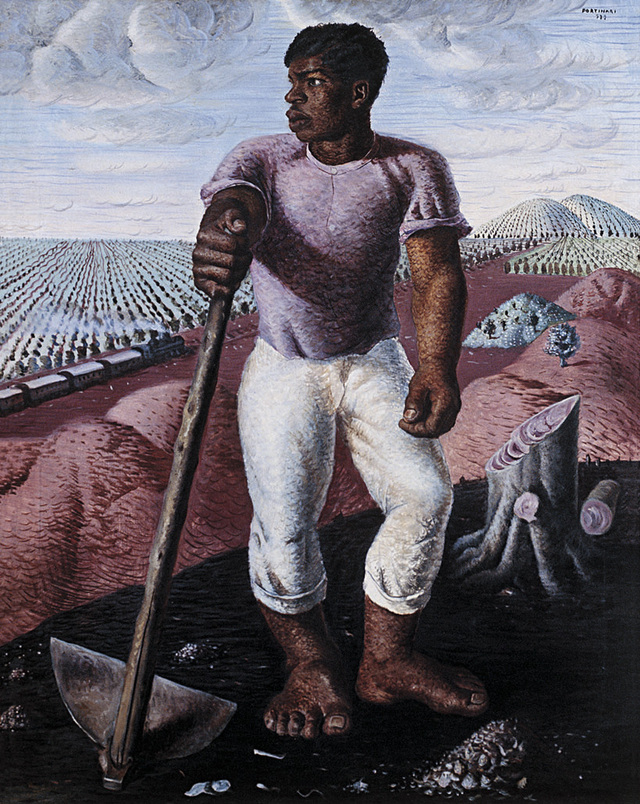Category: The Arts
On the Uses of Mistletoe
Stolen
It’s one of my favorites, let’s hope they give it back. In the meantime, Merry Christmas everybody!
Evil, ticket-gulping bots?
What high tech wonder-tools does RMG use to defeat Ticketmaster’s captchas, the annoying jumble of characters used to prove your humanity? Is it Optical Character Recognition? Something even more futuristic, maybe web 3.0-ish? Nah. Cipriano Garibay, president of RMG Technologies, boasts: "We pay guys in India $2 an hour to type the answers."
Here is the full story of why concert events must move more and more toward market-clearing prices. Thanks to Aaron Steinberg for the pointer.
The most underrated and overrated cultural events of the year
From Prospect (UK), here is a long list, my picks were:
Overrated
Hollywood movies. US ticket sales recovered this year, but to what end? This was a year for microculture, such as Facebook, Twitter and YouTube. The bigger visual productions of the year won’t much stand the test of time. On the bright side, television drama continues to rise in quality.Underrated
The iPhone. The world really did change on 29th June 2007. We now have handheld personal computers and personal entertainment centres, yet they are no larger than a thin pack of cards. And no, I’m not a techie, a gadget freak or an Apple lover. The device itself is beautiful as well.
Going meta on you again, the most frequently cited overrated event was the movie version of Atonement, then the new Philip Roth book (the latter received one pick for underrated as well). Receiving one or more underrated picks were (I think) the new Hugh Brogan book on Tocqueville (which is excellent), the new Adam Thirlwell novel (no US edition yet), and Nicola Barker’s Darkman.
The culture that is French, a continuing series
Are these consistent or contradictory points of view?
What those foreigners are missing is that French culture is surprisingly lively. Its movies are getting more imaginative and accessible. Just look at the Taxi films of Luc Besson and Gérard Krawczyk, a rollicking series of Hong Kong-style action comedies; or at such intelligent yet crowd-pleasing works as Cédric Klapisch’s L’Auberge Espagnole and Jacques Audiard’s The Beat That My Heart Skipped, both hits on the foreign art-house circuit. French novelists are focusing increasingly on the here and now: one of the big books of this year’s literary rentrée, Yasmina Reza’s L’Aube le Soir ou la Nuit (Dawn Dusk or Night) is about Sarkozy’s recent electoral campaign. Another standout, Olivier Adam’s A l’Abri de Rien (In the Shelter of Nothing), concerns immigrants at the notorious Sangatte refugee camp. France’s Japan-influenced bandes dessinées (comic-strip) artists have made their country a leader in one of literature’s hottest genres: the graphic novel. Singers like Camille, Benjamin Biolay and Vincent Delerm have revived the chanson. Hip-hop artists like Senegal-born MC Solaar, Cyprus-born Diam’s and Abd al Malik, a son of Congolese immigrants, have taken the verlan of the streets and turned it into a sharper, more poetic version of American rap.
Those would not have been my exact picks but there you go. (I was offended by L’Auberge Espagnole; could not one of them have had an internet start-up? I also found myself longing for organized religion.) Alternatively:
In a September poll of 1,310 Americans for Le Figaro magazine, only 20% considered culture to be a domain in which France excels, far behind cuisine.
Or:
Only a handful of the season’s new novels will find a publisher outside France. Fewer than a dozen make it to the U.S. in a typical year, while about 30% of all fiction sold in France is translated from English.
Most of all, the French specialize in having good taste in culture, which is a form of interior mental production. A world music buy on a French label is virtually a sure thing. The question is how good your culture can get, these days, without exporting much. Here is the full and interesting story.
Thanks to David Zetland for the pointer.
Electrocution

Successive versions of this George Bellows lithograph remove the witnesses one by one until only the executioner and his victim remain.
Meta-recommendations
I’ve spent lots of time scouring this year’s "Best of" lists, and I thought I should pass along what I have learned. These are not my recommendations (though I often approve), these are what I have gleaned from the recommendations of media critics. They are my judgment of the most common selections on the "Best of" lists, noting that I did not check the lists from publications I do not enjoy and thus there is an implicit filter being applied.
So here is my aggregation:
1. Non-fiction book: Alex Ross, The Rest is Noise.
2. Fiction book: Tree of Smoke, or The Savage Detectives.
2. Miscellaneous book: Letters of Ted Hughes. Everyone loves this, I haven’t read it yet.
3. Movie: No Country for Old Men. The Diving Bell and the Butterfly gets lots of picks, given that it is playing in only two cities.
4. Classical CD: Lorraine Hunt Lieberson Sings Peter Lieberson, "Neruda Songs." Read the excellent Ed Uyeshima review on Amazon, it is first.
5. Popular music: LCD Soundsystem, Sound of Silver, or possibly Neon Bible, by Arcade Fire.
I still can’t figure out the consensus jazz CD of the year. Any help?
I might add that the non-meta me basically approves of this list, with two caveats. First, the Lieberson CD, while quite good, in part received so many mentions because the singer, Lorraine Hunt Lieberson, met a young and tragic death this last year. It was her husband who composed these songs for her. Second, I don’t myself have clear picks for popular music. I do a lot of my popular music buying in December, when the "Best of" lists come out. I did put on LCD Soundsystem this morning but was bored by it on first listening.
The Golden Compass
It lacks direction.
Unusual thoughts about contemporary art
Contemporary art is highly individualistic. It is about freedom of
expression, the chance to make one’s mark and to speak with a
distinctive voice – all characteristics of the right, rather than the
left. Contemporary artists are entrepreneurs in every sense of the
word. The Brit Artists of the 1990s have turned themselves into brands,
selling a luxury commodity to a group of discerning purchasers. The Damian Hirst skull,
retailing at £50 million, could not remotely be described as a leftwing
statement, except in the sense that, like many projects of the left, it
is massively over-priced and a colossal waste of money (only kidding
Damian).
Here is more, hat tip to www.bookforum.com.
Best of 2007 lists
Here are the links to the lists, again courtesy of the awesome Rex Sorgatz. Last year this link cost me a good $200. Rex adds more to the list as the links pop up, so do revisit the site periodically. Oddly I can’t get this link to work on every computer or browser, I am not sure why not. Thanks to Jason Kottke for the pointer.
My favorite things Honduran
1. The best known Honduran painter is Jose Antonio Velásquez, here is a typical image.
2. America Ferrara, who plays Betty in Ugly Betty, is of Honduran parents. I like that show, I don’t love it.
3. This guy did lots of scientific work, including the laying of some foundations for Viagra, and he married a Belgian princess. I’ve yet to benefit from his existence.
Plus I would cite a few personal acquaintances, past and present, of whom I am very fond. That’s what I can think of folks, and I wouldn’t have found #3 without Google. This website assures us "There are famous people from Honduras," although the link to the list of them is broken.
I have also read one short story from Honduras, from an anthology of Latin American short stories; it is entitled "Malaria."
I might add I am very fond of airfares to Honduras; right now the roundtrip is cheaper than the one way shuttle to New York City. And maybe the flight is quicker too, no holding patterns over LaGuardia!
Most of all I like places where no one else goes, and I expect this short weekend trip to be very worth its while.
Assorted links
1. Ron Mueck blog, via Chris Hayes
3. How scary is a plunging dollar?: DeLong and Krugman defend common sense
Econometrics Haiku
Here are some Econometrics Haiku from noted econometrician Keisuke Hirano.
Supply and demand:
without a good instrument,
not identified.
I relate to these especially:
T-stat looks too good.
Use robust standard errors–
significance gone.
and
From negation comes
growth, progress; not unlike a
referee report.
Kottke interview of Cory Doctorow
Joel Turnipseed blogging at Kottke asks, why give away books for free? Cory responds:
…we live in a century in which copying is only going to get easier. It’s the 21st
century, there’s not going to be a year in which it’s harder to copy than this
year; there’s not going to be a day in which it’s harder to copy than this day….And so, if
your business model and your aesthetic effect in your literature and your work
is intended not to be copied, you’re fundamentally not making art for the 21st
century. It might be quaint, it might be interesting, but it’s not particularly
contemporary to produce art that demands these constraints from a bygone era….So that’s the artistic reason. Finally, there’s the ethical reason. And the
ethical reason is that the alternative is that we chide, criminalize, sue, damn
our readers for doing what readers have always done, which is sharing books they
love–only now they’re doing it electronically. You know, there’s no solution
that arises from telling people to stop using computers in the way that
computers were intended to be used. They’re copying machines. So telling the
audience for art, telling 70 million American file-sharers that they’re all
crooks, and none of them have the right to due process, none of them have the
right to privacy, we need to wire-tap all of them, we need to shut down their
network connections without notice in order to preserve the anti-copying
business model: that’s a deeply unethical position. It puts us in a world in
which we are criminalizing average people for participating in their
culture.
The economics have yet to be worked out but I think Cory has got the aesthetics and the ethics right. Lots more of interest.
My favorite things Georgia
1. Favorite Ray Charles song: "What’d I Say"; it’s heresy to admit this, but overall his stuff leaves me cold.
2. Favorite Jasper Johns series: Lately I often call up the "Decoy" prints in my mind. But the "Targets" series is my pick, followed by the American flag and "Numbers."
3. Big band arranger: Fletcher Henderson — does he deserve as much credit as Benny Goodman?
4. James Brown song: "Bewildered," and have you ever seen the videos of JB dancing on the T.A.M.I. show?
5. Favorite Otis Redding song: "Fa-Fa-Fa-Fa-Fa (Sad Song)."
6. Best Little Richard cover: "Long Tall Sally," Beatles.
7. Favorite Gladys Knight song: Tough choice.
8. Fiction: Flannery O’Connor, Carson McCullers, Erskine Caldwell, and James Dickey are all candidates but none of them do it for me.
9. Movie, set in: Duh. Remember "Dueling Banjos"?
10. Favorite REM song: "Shaking Through," from Murmur, is a good pick.
11. Favorite Leo Kottke album: Six and Twelve String Guitar; this one changed my life.
12. Musician I’m not supposed to like: Tommy Roe; "Sweet Pea" and "Dizzy" still sound pretty good to me.
The bottom line: Awe. It’s Jasper Johns plus music, music, and more music, and I didn’t even have to think hard about the music. I’m sure I left plenty out.

